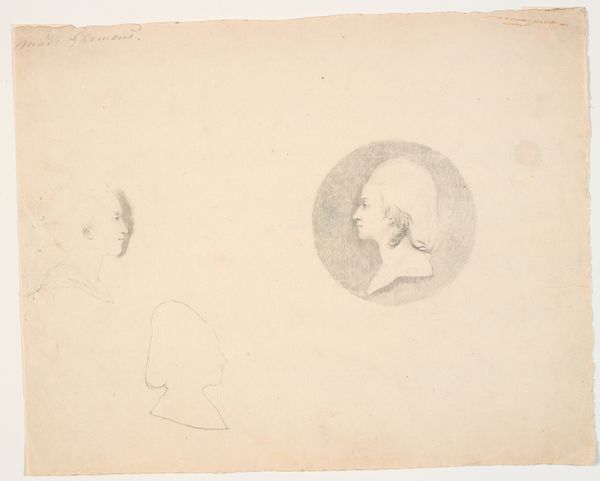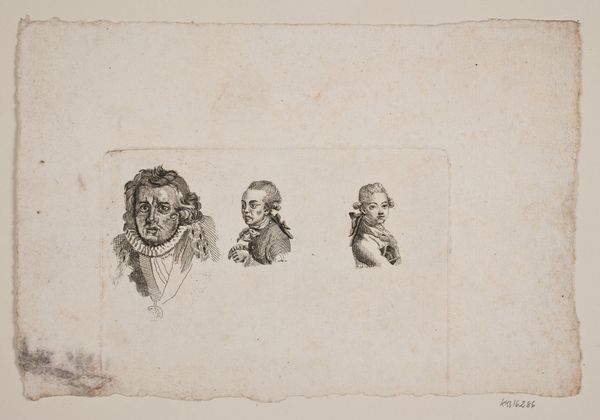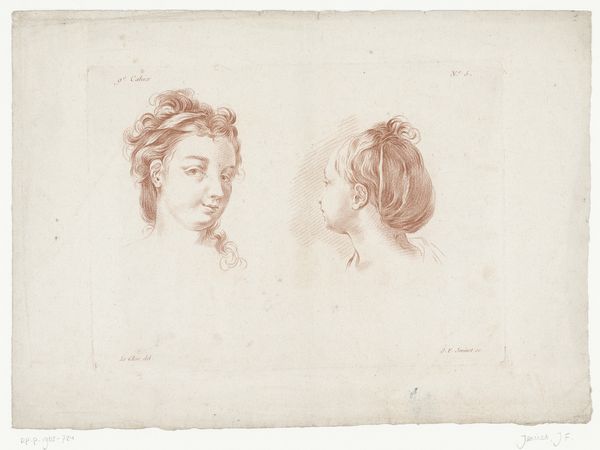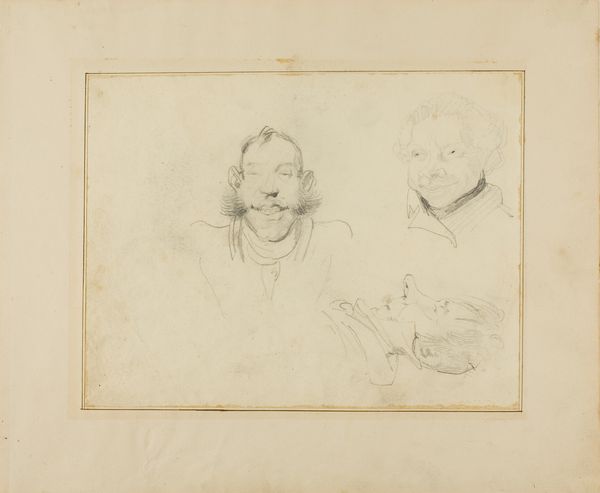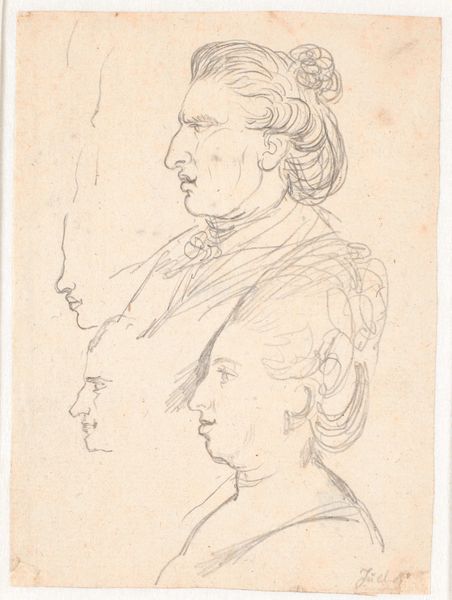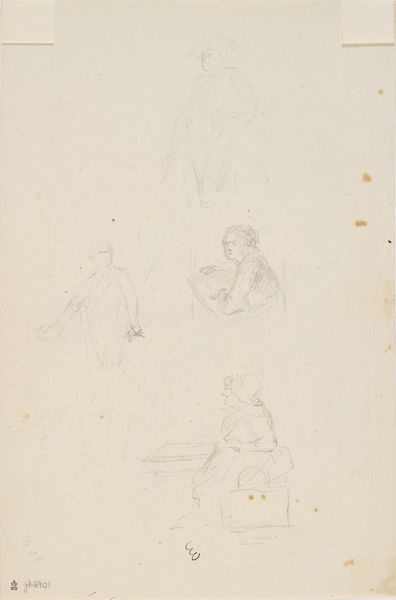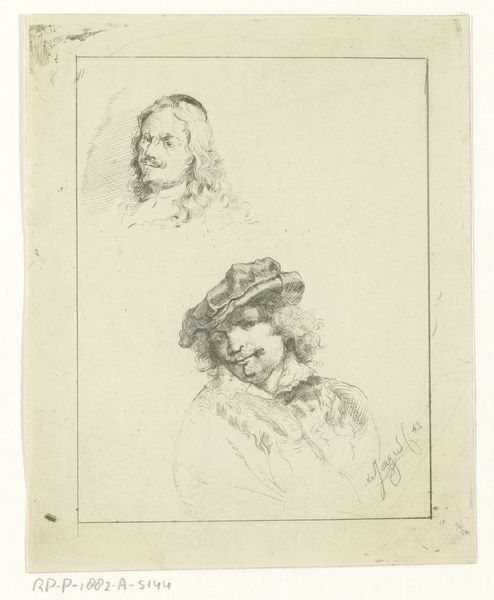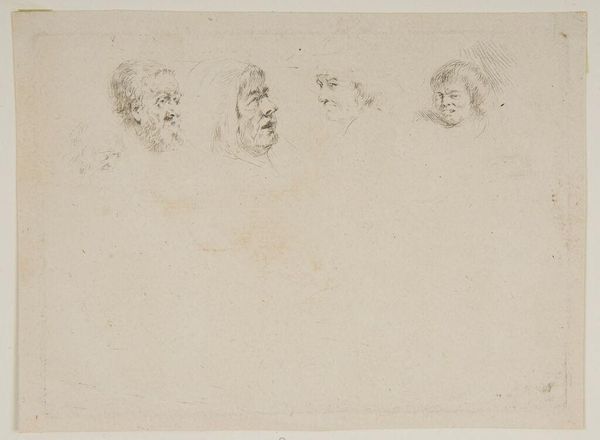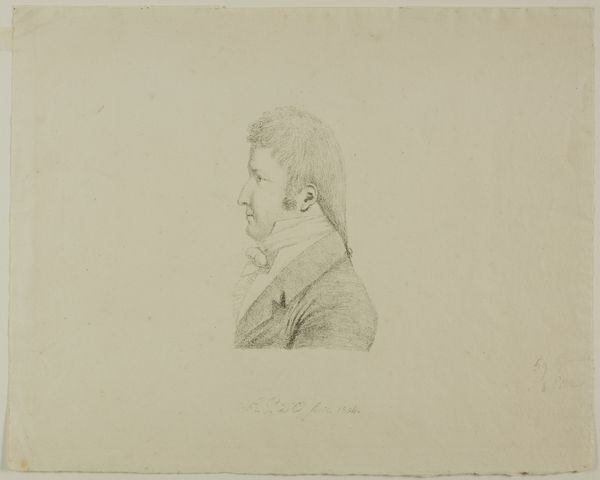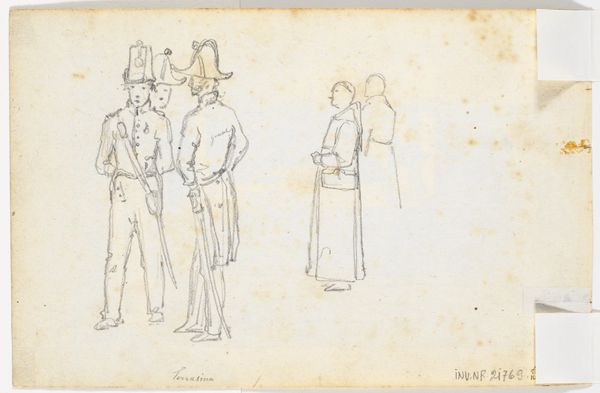
drawing, lithograph, print, paper, pencil
#
portrait
#
drawing
#
neoclacissism
#
lithograph
# print
#
paper
#
group-portraits
#
pencil
#
history-painting
Dimensions: 82 × 235 mm (image); 247 × 303 mm (sheet)
Copyright: Public Domain
Curator: At first glance, this lithograph whispers of elegance, like a forgotten sonnet. It feels quite intimate despite depicting three individuals. Editor: Indeed. This is “Bust Portraits of Three Brothers,” a work from 1805 attributed to Antoine Philippe d'Orléans. It presents us with three neatly rendered portraits, likely of noble lineage, executed with delicate lines on paper. Prints like these circulated widely during the period. Curator: You know, those wispy lines are what initially caught my eye. It’s like capturing a fleeting thought, a sketch of brotherhood. There's something so…transient about the piece, don’t you think? Are we looking at this through rose-tinted glasses, knowing they were nobility? Editor: It's essential to consider the historical context. Neoclassical art often sought to revive ideals of virtue and order, something we see reflected in the subjects' stoic countenances. Yet prints also democratized art to some degree, offering access to a wider public beyond court circles, helping to spread these values beyond select audiences. Curator: Yes, their eyes seem to hold the weight of expectation and power... It's as if their gaze is meant for posterity and a certain "brand," perhaps? Editor: Precisely. And the choice of lithography allowed for relatively easy replication, ensuring the family’s image was perpetuated. This portrait probably played an important role in shaping public perception. These sorts of items were certainly consumed by a larger number of people beyond just family members. Curator: The subtle detail in their dress amidst the simplicity of the drawing – it hints at privilege and careful self-fashioning in a world where appearances were everything. How poignant is that? Editor: I agree, the work beautifully encapsulates the performative nature of identity within a specific historical and political context, reflecting both personal and societal ambitions through something as seemingly simple as a portrait. Curator: Looking at this piece, you are looking at the world through their world; as a final thought, to imagine these brothers, what they felt, who they loved. What power! Editor: In short, art not only gives us the what, but also suggests the how and especially the why of the social structures that enable and constrain it. Thank you for highlighting this today.
Comments
No comments
Be the first to comment and join the conversation on the ultimate creative platform.
